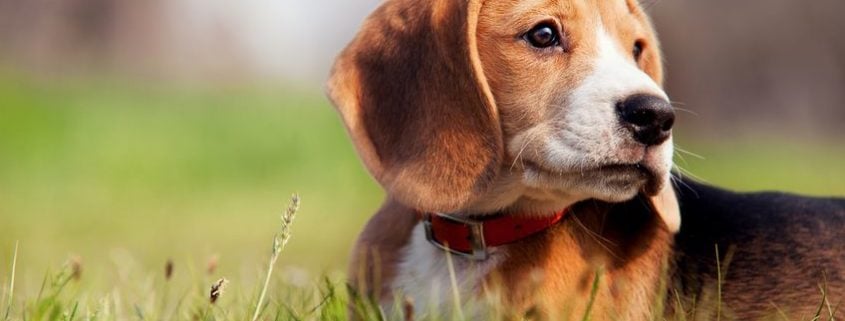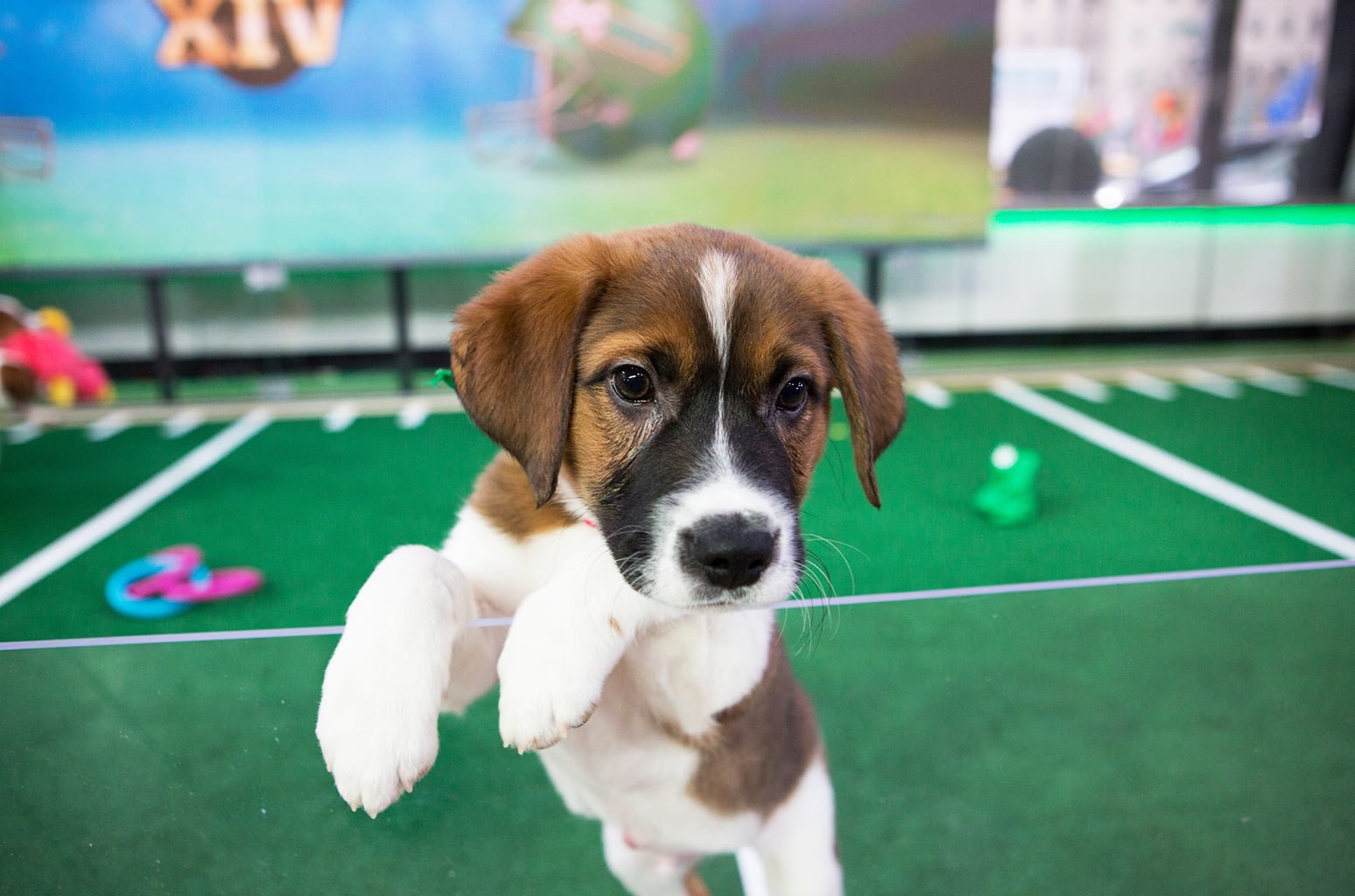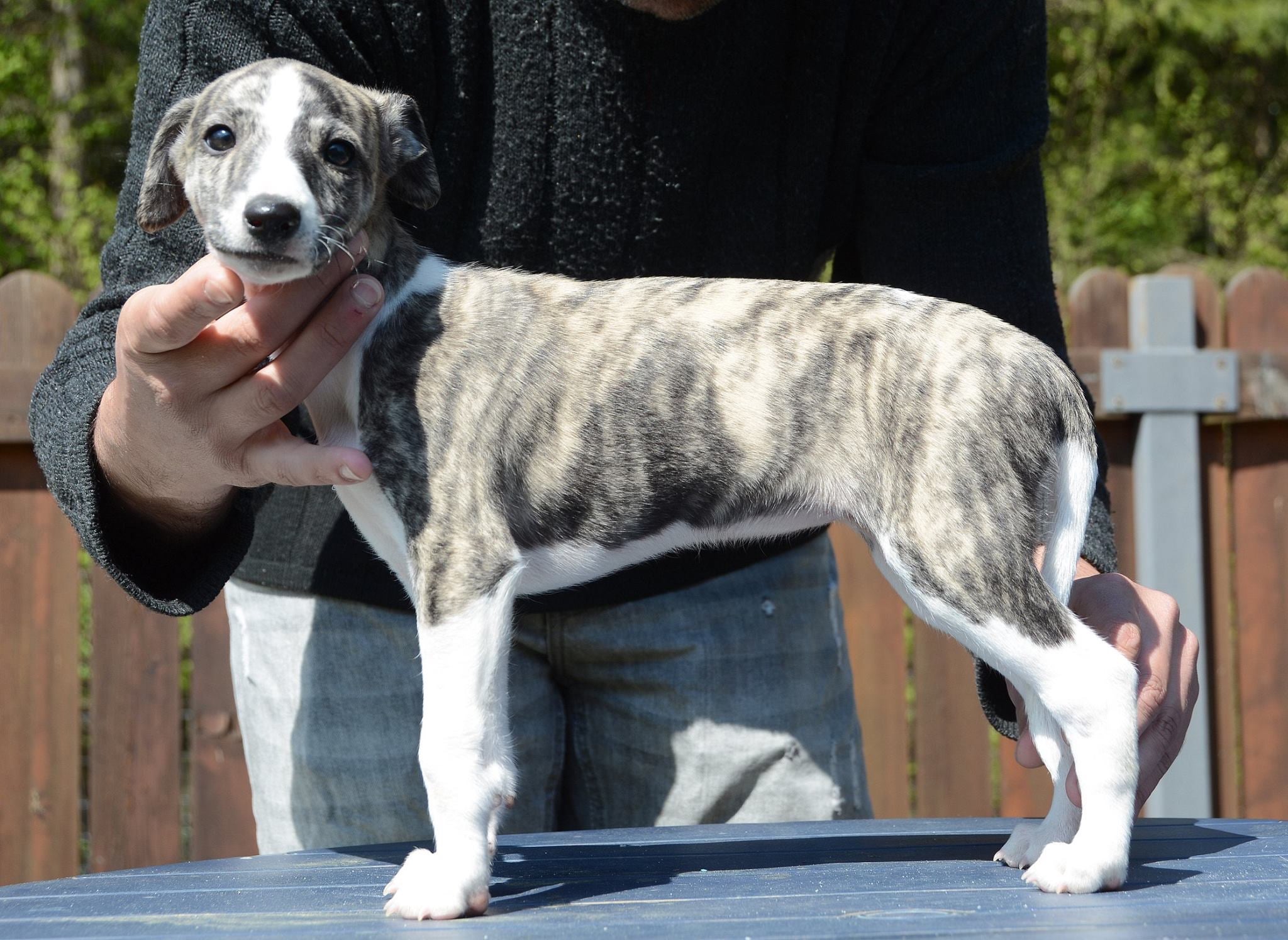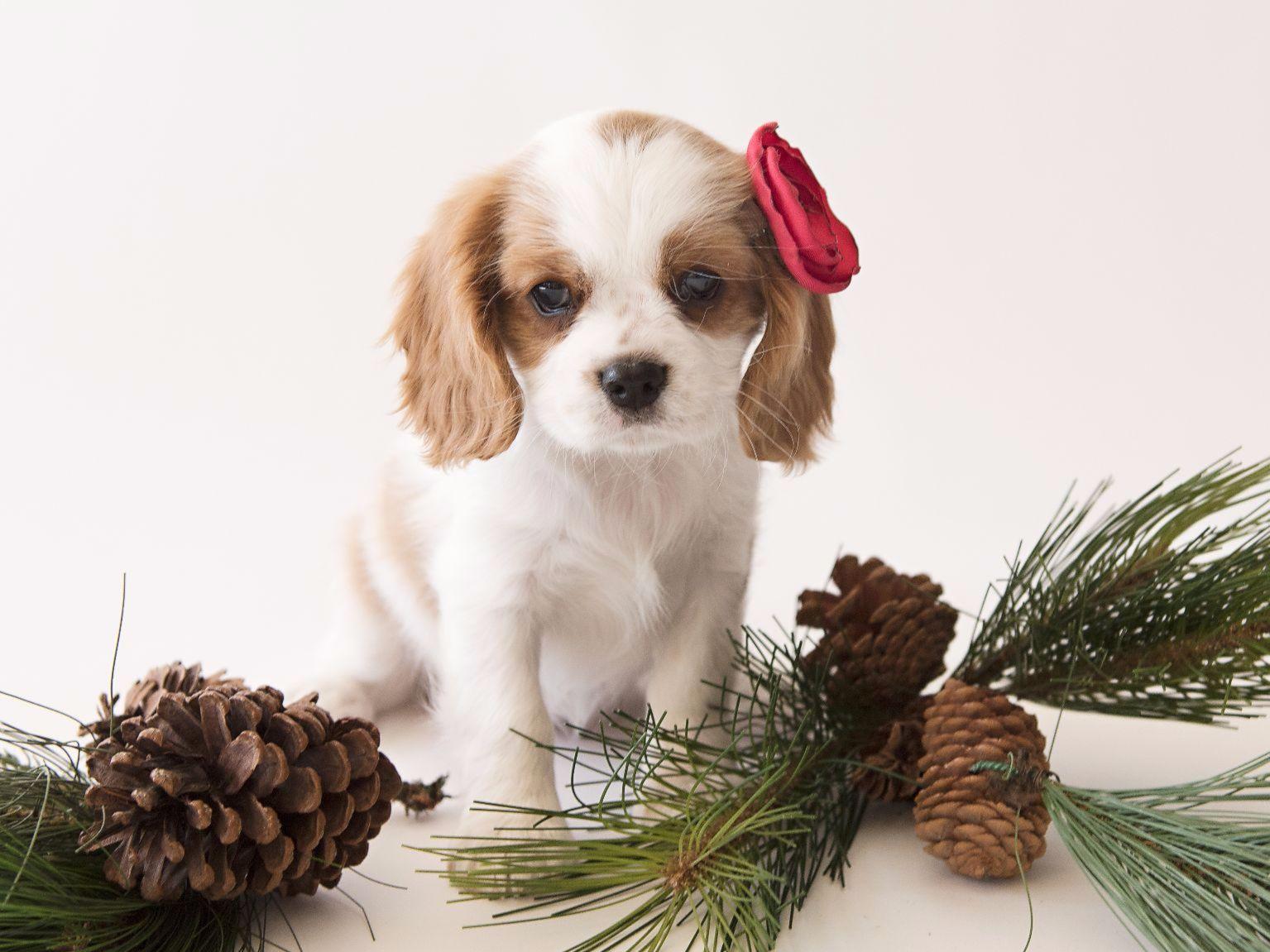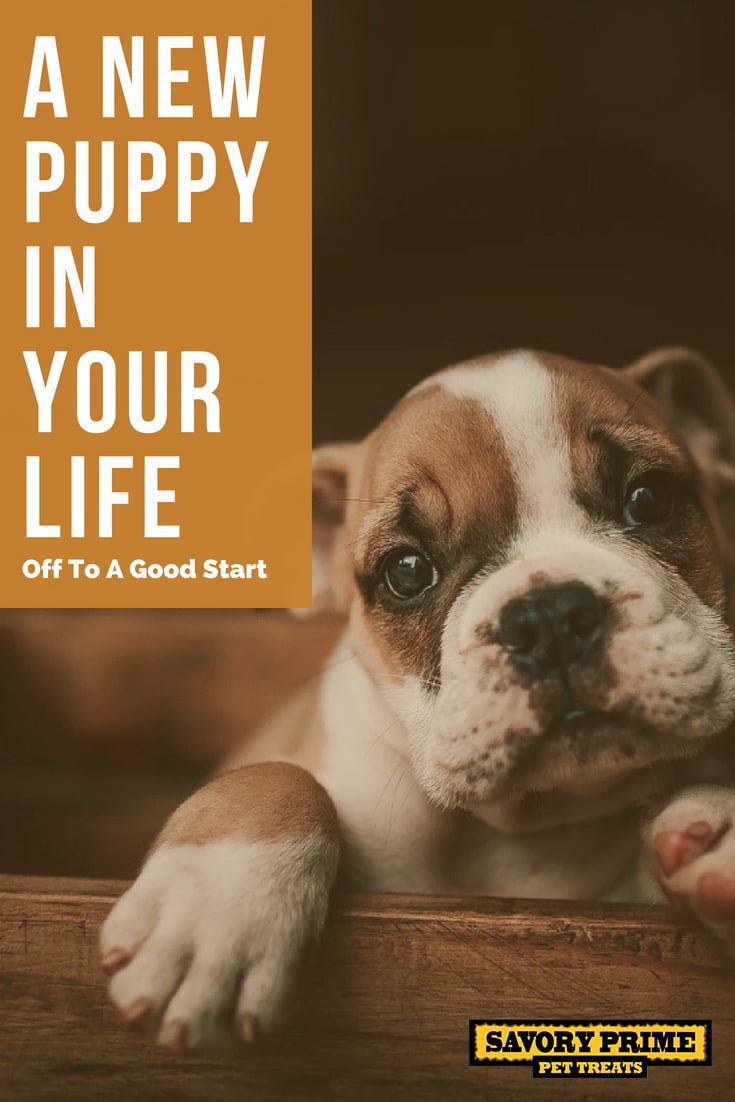Good starts are important, and a puppy begins being a member of your family on the day he arrives in your house. This is the biggest adventure of his life. He’s separated for the first time from his mother and littermates and he misses them. He is suddenly out in the great big world and he’s a little scared.
How this adventure goes depends very much on you. If you make a few simple preparations for his arrival and are calm, quiet and reassuring during his first day, he’ll adapt quickly. But if you make this an occasion for riotous celebration, you could find yourself with a nervous pup on your hands. Treat this newcomer gently, as you would a baby. After all, that’s what he is.
Getting Ready for Puppy:
Before you bring your new pet home, lay in a supply of Puppy Food, a special formula for growing pups and a few possessions that will be exclusively his own. He will need a bed, food and water bowls and a collar. A chewable, hard rubber toy would be a nice welcoming extra.
Dog beds are available in vast array these days, ranging from the practical to the ridiculous. You can buy beribboned baskets with satin pillows, pup tents” in decorator colors, even beds padded with mink or chinchilla. But you’d do best to avoid the gag and gimmicks. What you want for a puppy is a bed that will provide warmth, comfort, and protection. It can be home-made or storebought, but it must meet certain standards:
- The bed should be raised a few inches off the floor, or well padded to protect the puppy from chills.
- It should be placed in a warm and quiet spot, completely protected from drafts. Drafts are very dangerous to puppies, because of their low resistance to infection.
- It should be kept clean, as another precaution against disease.
- Ideally, it should have a roof or door, or sides too high to jump or climb over, in order to keep puppy confined until he’s housebroken.
- It should be made of a sturdy material that puppy can’t chew to shreds.
One of the most practical and convenient beds, recommended by many dog trainers, is a shipping or show crate, available in pet shops. A crate will meet all puppy’s needs for privacy and protection, and it will also come in handy when you want to transport him by car. If you don’t want to invest in a crate, you can construct one by putting a heavy-duty wire mesh lid or door on a wooden box; make sure the box provides adequate ventilation.
Another way to improvise a puppy bed is to use a child’s playpen. A blanket secured over the top of one end of the playpen makes a cozy sleeping den, and there’s still plenty of play space. The playpen offers obvious advantages during puppy’s chewing and puddling periods. But you must make sure he can’t escape through the bars; if he’s a very tiny pup you probably should attach some kind of metal screening to the outside of the pen.
Whatever kind of bed you choose, pad it well with a thick, flat layer of newspapers, which can be changed as soon as they become soiled. Cover the newspapers with something soft like an old blanket or towel, and place the bed in a quiet, draft-free corner, well apart from family traffic or hubbub. But don’t isolate him in a closed room at the beginning, when he’s still a newcomer to your household. Dogs are social animals, and the ordinary sounds of family life will be comforting to the new puppy.
Make it a rule that when the puppy is sacked in, his bed is off limits to all intruders Nothing is more important to his growth, energy and emotional stability than long periods of peaceful, uninterrupted sleep.
Outdoor Kennels:
The pup that is going to be raised as an outdoor animal can start sleeping in a kennel at around 3 to 4 months (or even younger during the summer months). This is true of large and medium-sized dogs only; small dogs should sleep indoors longer. Toy breeds should not be kenneled outdoors under any circumstances.
Doghouses can be plain or fancy. You can build one from scratch, assemble one of the pre-fab jobs from your local pet dealer, or buy one readymade. Friskies Research Kennels recommends a few simple standards that the outdoor kennel should meet for your pet’s health and comfort:
It must be dry and draft-free. The floor should be raised a few inches off the ground so that no dampness can get in, and it should be covered with a soft bedding material. Place the doghouse in a spot that provides both shade and protection from the winds. The doorway should be covered with a baffle or canvas flap, and the roof or one side should be removable for easy cleaning.
An outdoor kennel must be suited to the climate Choose a material-plywood, cinder or concrete block, brick, and soon-to match the weather puppy will be exposed to.
In warm areas, a single thickness roof that can be tilted for ventilation is excellent, as are windows that are hinged. In cold areas, double-thick or insulated roofs should be used.
A removable louvered section inserted between the roof and the sleeping quarters will allow air circulation in warm weather; remove the louvered section during cold weather to aid in heating the house. If the house is wood, paint it both inside and out to discourage parasites Keep it clean; dogs are clean by nature, so you should help your pet by doing a regular doghouse cleaning.
As a rule, dogs are happier and more affectionate and companionable pets if they are allowed to live indoors, close to family activity. But whichever way it is to be, indoors or out, be consistent. Healthy puppies can adapt to either arrangement, but sudden changes in temperature or great extremes of temperature are hard to them.
A spell of near-zero weather is a signal to move your dog to a warmer spot for a while. And remember that dogs suffer terribly from the unrelieved sun and extreme heat; a shady, cool spot must always be available in the warmer weather.
His Possessions:
Puppy’s food and water bowls should be of a non-breakable (and non-chewable) material that is easy to keep clean Metal, hard rubber or plastic are suitable. The food pan should be shallow so that he can easily get his muzzle into it. As for the water bowl, the cardinal rule is to keep it filled with fresh, cool water at all times. Dogs need a great deal of water and suffer genuine anguish without it, so never let his well run dry.
Get him an inexpensive collar to start with, because he’ll soon outgrow it. A soft, flat leather one is suitable for a young pup. Fasten it snugly, with enough room for your finger to slip between it and puppy’s neck. He may scratch and paw at it for a while, but he’ll soon surrender to this first form of restraint. And he must’ because soon you will be attaching a license tag, your proof of legal ownership of your pet, to his collar.
Your local humane society or animal shelter can tell you your city’s regulations on dog licenses and where to obtain them. Six months is the deadline in most cities, but some require licensing at an earlier age. You will have to show proof of rabies inoculation, and the license will be renewable annually.
Once the tag is securely fastened to his collar, make it a rule never to remove it. This is his legal identification and your best guarantee of getting him back if he is lost or stolen. A metal tag giving your own name, address and telephone number is a good extra precaution, but don’t put your pet’s name on it. This could help the dog thief to make friends, and might even be used as evidence if, the thief should claim ownership in court.
His First Day:
If possible, bring your new pet home in the morning. This will give him a full day to get used to his new world before you put him down for the night. If you have a long car ride, take a padded box along, or better yet, someone to hold and comfort him. Be prepared for accidents by arming yourself with a few newspapers and paper towels or mop-up cloths.
If there are children in your family, their intro auction to puppy is one of the most important good starts of all. “Will the dog be all right around children?” is one of the most common queries of the prospective dog owner. But in many cases, the question should be reversed: “Will the children be all right around the dog?”
Children and dogs take naturally to each other, and youngsters can learn some eloquent lessons in devotion and loyalty from even the tiniest pup. But children should also learn some lessons in responsibility and tenderness in the care of pets.
One of the easiest ways to teach kindness is to give the children certain tasks of puppy care, such as seeing that he is fed on time, that his water dish is always full, and that his coat is brushed and combed regularly.
Most of all, they should be taught that puppies are fragile. Children, especially very young ones, can sometimes love so much that it hurts. In fact, many experts feel that children under six years of age should not have a small puppy as a pet. They’re too inclined to treat all cuddly creatures as if they were teddy bears.
Rough handling, tight hugs and falls from beds, sofas, chairs, and tables can damage delicate bones. Like human infants, the very young puppy has a soft spot on the top of his head that, if punctured in a fall or rough play, can even cause death.
Here are some play-safe rules for children and every member of the family:
- Never grab a puppy by his front legs. His legs aren’t strong enough to take such treatment. And never pick him up by the scruff of the chest, the other under his rump, to make him feel secure.
- Don’t frighten the young puppy with sudden loud noises.
- Never tease; you want to gain his confidence.
- Never leave him in a high place, even for a moment; he may take a bone-breaking nosedive.
- Don’t overtire a puppy. Cuddling and playtime are good for him, but for brief periods, only.
- Never disturb him while he’s eating. And don’t romp and play with him after his meal; he should have a little quiet time after eating.
- Never, never disturb him while he’s sleeping. Like all babies, he needs his sleep, so puppy’s naptime must be sacred.
It’s a good idea to keep visitors to a minimum on his first day. There will be plenty of time to show him off later. Stand back and let his nose around the house at his own speed; this is his way of establishing his new territorial rights. And remember to put him in his crate often for naps.
The main ingredient for success with your new puppies the first couple of weeks in your life is to be prepared. Take preventative measures instead of constantly reacting to problems. Think ahead, take care, and your new relationship with your puppy will be about getting to know one another rather than constantly fighting each other.
Recent Pet Posts
Blog Categories
Product categories
- Accessories (9)
- Chicken & Veggie Wraps (8)
- Grillers Jerky Tenders (4)
- Jerky Treats (10)
- Made in the USA (9)
- Non-Rawhide Treats (28)
- Beggar Bone (11)
- Bully Sticks (4)
- Butcher Bone (4)
- Cod Skin Fish Treats (3)
- Pork Skin Twists (2)
- Pressed Rawhide Bones & Rolls (16)
- Bones & Rolls (6)
- Pressed Rawhide Bulk (6)
- Twist Sticks (4)
- Savory Munchies (13)
- Supreme Bones & Rolls (48)
- American Rawhide Bulk (16)
- Rawhide Bones (14)
- Rawhide Chips (6)
- Rawhide Rolls & Sticks (12)
- Uncategorized (8)

